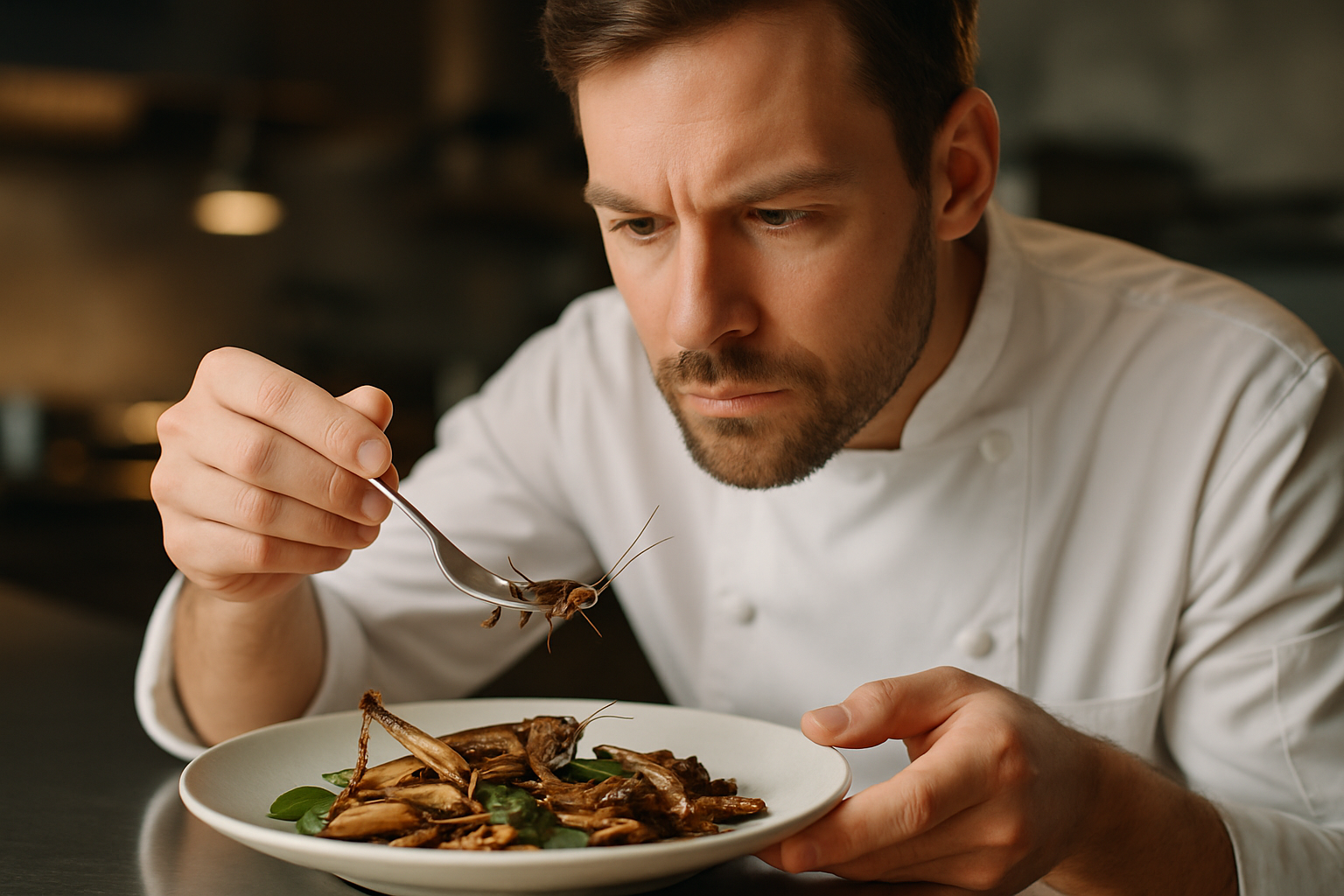Gourmet Insect Cuisine: A Culinary Adventure
Bugs on your plate? Yes, please! Welcome to the world of entomophagy, where insects take center stage in gourmet cuisine. This emerging culinary trend is not just about shock value; it's a sustainable, nutritious, and surprisingly delicious way to diversify our diets. From cricket flour cookies to mealworm risotto, innovative chefs are pushing boundaries and challenging our palates. Let's dive into the fascinating realm of insect gastronomy and discover why bugs might just be the food of the future.

Moreover, insects have a high feed conversion ratio, meaning they’re excellent at turning their food into body mass. This efficiency translates to less waste and more usable protein for human consumption. As our planet grapples with the environmental impact of industrial agriculture, insect farming offers a promising path towards more sustainable food systems.
But sustainability isn’t the only selling point. Insects are nutritional powerhouses, packed with protein, vitamins, and minerals. Many species contain higher levels of iron, zinc, and calcium than beef or chicken. This nutritional profile makes them an attractive option for health-conscious consumers looking to diversify their protein sources.
The Culinary Potential of Bugs
Forget everything you thought you knew about eating insects. Today’s insect cuisine goes far beyond simple roasted crickets or fried grasshoppers. Innovative chefs are incorporating insects into gourmet dishes that rival traditional fine dining experiences. From ant-infused gin to silkworm pupa croquettes, the possibilities are endless.
One popular approach is using insect flour as a protein-rich ingredient in baked goods. Cricket flour, for instance, has a nutty flavor that works well in cookies, bread, and energy bars. It’s gluten-free and packed with nutrients, making it an excellent alternative for those with dietary restrictions.
Chefs are also experimenting with whole insects as star ingredients. Mealworms, with their mild, nutty taste, are being used in risottos and pasta dishes. Ants, prized for their citrusy flavor, are finding their way into high-end cocktails and as garnishes for savory dishes. Even traditionally squeamish diners might be surprised by how delicious these insect-based creations can be.
Overcoming the ‘Yuck’ Factor
Despite the culinary potential and environmental benefits, Western cultures still struggle with the idea of eating insects. This aversion, often referred to as the ‘yuck factor,’ is primarily cultural. In many parts of the world, including Southeast Asia and parts of Africa, insects are already a common part of the diet.
Overcoming this psychological barrier is crucial for the widespread adoption of entomophagy. Education plays a key role in this process. As people learn about the nutritional and environmental benefits of eating insects, they become more open to trying them. Cooking demonstrations and tastings can also help demystify insect cuisine and show skeptics that bugs can be both delicious and approachable.
Another strategy is to introduce insects in familiar forms. Insect protein bars, for example, offer a familiar format for those hesitant to try whole bugs. Gradually, as people become more comfortable with the idea, they may be willing to explore more adventurous insect-based dishes.
The Future of Insect Gastronomy
As the world population grows and resources become scarcer, insects may play an increasingly important role in our food systems. The global edible insect market is projected to grow significantly in the coming years, driven by both environmental concerns and culinary innovation.
In the near future, we might see insect-based products becoming more mainstream. Insect protein powders could compete with whey and plant-based proteins in the health food market. Fast-food chains might start offering cricket burgers as a sustainable alternative to beef. High-end restaurants could feature insect tasting menus, showcasing the diverse flavors and textures of different species.
Technology will likely play a crucial role in scaling up insect production. Automated farming systems and precision breeding techniques could make insect farming more efficient and cost-effective. This could help bring down prices and make insect-based foods more accessible to the average consumer.
Insect Cuisine: A Global Perspective
While entomophagy is still emerging in Western cuisines, many cultures around the world have long traditions of eating insects. In Mexico, chapulines (grasshoppers) are a popular snack. In Thailand, fried insects are commonly sold as street food. By looking to these culinary traditions, we can gain inspiration for incorporating insects into our own diets.
As global cuisine continues to evolve and cross-pollinate, we may see more fusion dishes that combine traditional insect-eating practices with modern culinary techniques. Imagine sushi rolls filled with tempura-fried crickets, or a French-inspired escargot dish using giant water bugs instead of snails.
This global exchange of ideas could lead to exciting new flavor combinations and cooking methods, further expanding the possibilities of insect cuisine. It also presents an opportunity for cultural exchange and understanding, as we learn to appreciate and adopt food practices from around the world.
Useful Tips & Facts
-
Start with familiar formats: Try insect flour in baked goods or protein bars before moving on to whole insects.
-
Crickets are often described as having a nutty, earthy flavor similar to sunflower seeds.
-
Mealworms are mild in flavor and work well as a crunchy topping for salads or as a meat substitute in tacos.
-
Ants, particularly lemon ants, can add a citrusy pop to cocktails or desserts.
-
Insects are incredibly efficient to farm, requiring far less water and feed than traditional livestock.
-
Many edible insects are complete proteins, containing all nine essential amino acids.
-
Insect exoskeletons are rich in chitin, a fiber that may have prebiotic properties.
As we face the challenges of feeding a growing global population sustainably, insect cuisine offers an innovative and exciting solution. By embracing entomophagy, we open ourselves up to new flavors, textures, and culinary experiences. Whether you’re an adventurous foodie or an environmentally conscious eater, exploring the world of edible insects could be your next great gastronomic adventure. So why not take the leap and add some bugs to your next meal? Your taste buds – and the planet – might just thank you.





